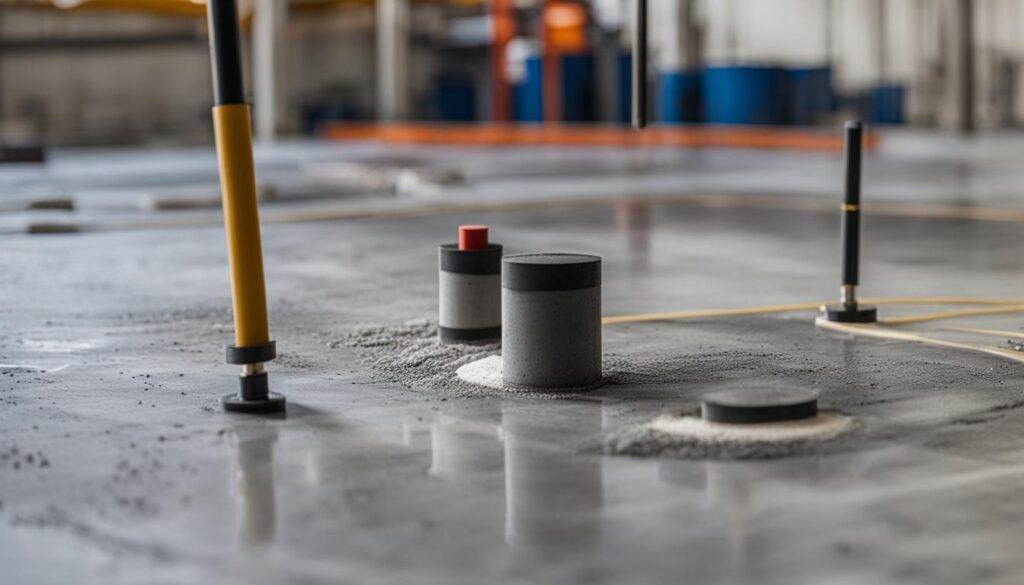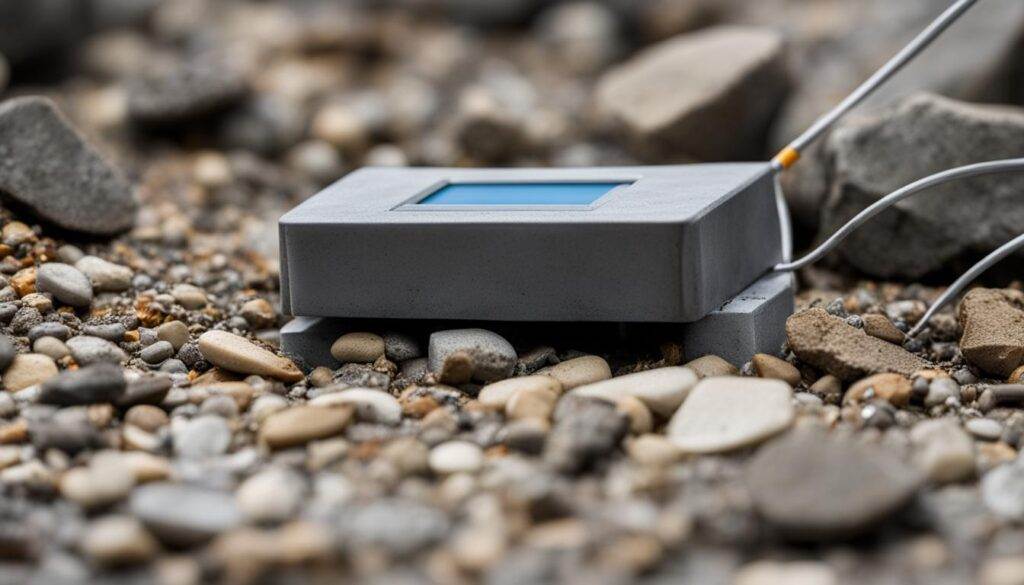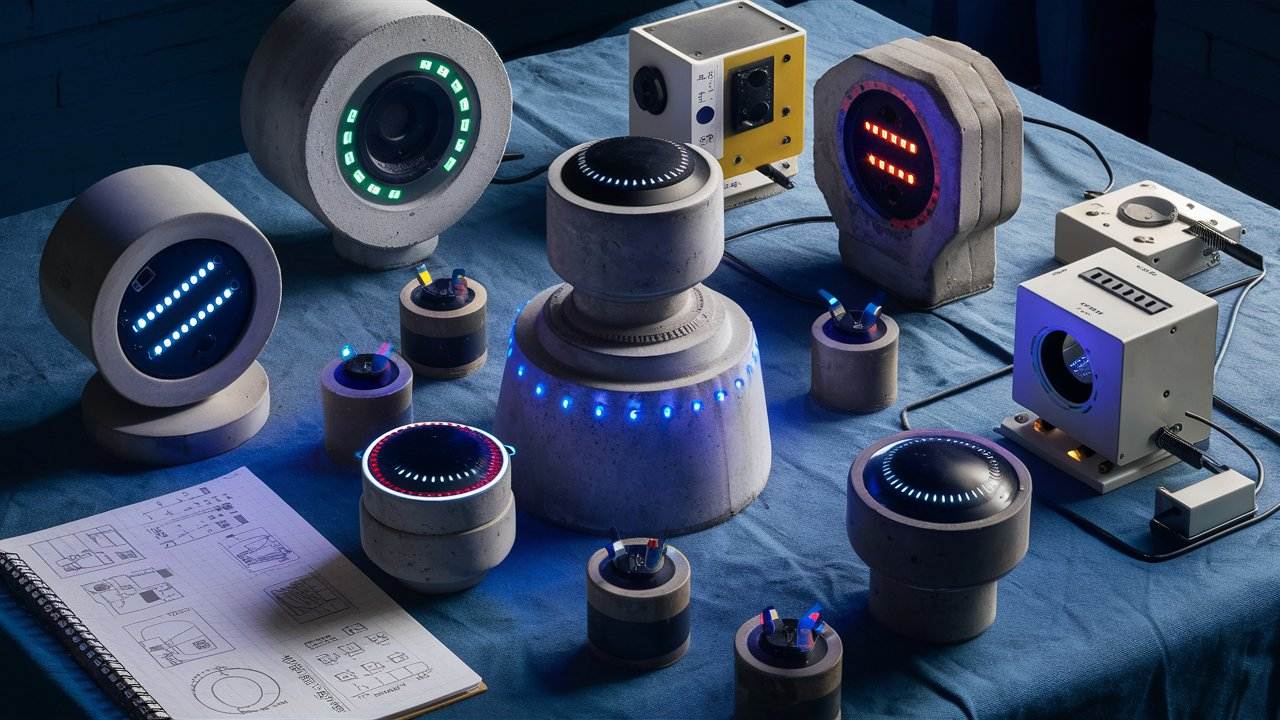Concrete sensors are essential for monitoring concrete performance. This guide covers various types of concrete sensors, including their working principles and advantages.
Understanding Concrete Sensors
Introduction
Concrete sensors are smart devices used in construction to keep track of how concrete is doing. These sensors give real-time data on things like temperature and humidity, which helps in checking the strength and durability of the concrete. By constantly monitoring these factors, concrete sensors help make sure that buildings stay safe and sound. This technology makes construction better by allowing more accurate quality control, leading to safer and more reliable structures.
Purpose and Applications of Concrete Sensors
Concrete sensors have many uses in construction projects. They mainly help with quality control by giving precise data for making decisions. For example, temperature sensors in concrete can spot changes that might mess up curing times or affect how strong the structure is. These sensors also help in keeping an eye on reinforced concrete structures to make sure they stay safe over time.
In research and development, concrete sensors are useful for trying out new construction methods and materials by showing how different factors affect concrete performance. On construction sites, these sensors help with monitoring everything, making project management better through real-time data collection and analysis. This approach not only boosts efficiency but also helps prevent risks related to structural failures.
By using these advanced technologies in their projects, companies are leading the way in modernizing the construction industry with better monitoring capabilities and improved project outcomes.
Types of Concrete Sensors
Concrete Thermocouples
Concrete thermocouples are key tools for checking the temperature inside concrete. They work using the thermoelectric properties of materials, which means they create a voltage when there’s a change in temperature. This voltage gets measured and converted into a temperature reading.
The design is simple: two different metal wires joined at one end. This junction reacts to temperature changes. When you put these sensors in concrete, they give accurate readings that help monitor curing conditions and ensure the concrete reaches its needed strength.
Following standards like ASTM C1064 is important for getting reliable measurements. This standard explains how to measure the temperature of freshly mixed concrete correctly, making sure it’s consistent across projects. Accurate temperature readings are crucial for checking concrete strength development and avoiding problems with improper curing.
Wired Temperature and Maturity Loggers
Wired temperature and maturity loggers are advanced gadgets used to keep an eye on how concrete cures by recording its temperature over time. These loggers have sensors that track changes in voltage depending on the temperature, which helps determine the maturity and strength gain of the concrete.
One big plus of using wired loggers is their ability to provide continuous data on concrete maturity through something called maturity curve analysis. By recording temperatures regularly, these devices can predict when the concrete will reach its best strength without needing destructive testing methods.
These loggers are great for non-destructive testing (NDT) of concrete structures. They offer precise strength estimates by looking at historical temperature data, making them super useful for construction projects that need accurate monitoring and quality checks.
Wired Sensors with External Wireless Transmitter
Using wired sensors with external wireless transmitters offers a mix of both worlds for data transmission in construction settings. This setup allows real-time monitoring while using strong wired connections along with modern wireless communication methods.
External wireless transmitters can link wired sensors to cell networks or other systems like Bluetooth LE or LoRa. These protocols make it easy to transfer data from far-off or tough-to-reach places where regular wired connections might not work well.
This hybrid system is beneficial for construction projects because it provides reliable ways to send data continuously without interruptions. It also makes sensor placement more flexible, allowing better coverage of large or complicated sites.
Fully Embedded Wireless Concrete Sensors
Fully embedded wireless concrete sensors are a big step forward in construction tech. These self-contained probes work without wires and send data wirelessly via Bluetooth or Wi-Fi right from inside the concrete structure.
The main advantage of these sensors is how easy they are to install and their real-time monitoring capabilities. By embedding them directly into the concrete mix before pouring, there’s no need for external wiring or manual data collection anymore.
However, there are some downsides too. Battery life can be an issue since these sensors use internal power sources. Also, signal interference from surrounding materials might affect data quality. Despite these challenges, fully embedded wireless sensors offer unmatched convenience and efficiency in tracking how well the concrete is curing accurately.
Advantages and Applications of Concrete Sensors
Benefits of Concrete Sensors
Concrete sensors bring a lot of benefits to the construction industry. They give real-time data on things like temperature and humidity in the concrete mix, which helps in making better decisions. This leads to stronger concrete and better structural integrity.
Using these sensors also makes construction more efficient by allowing remote monitoring. This cuts down on manual checks and boosts labor productivity. Another big plus is early issue detection; you can spot problems before they turn into major headaches.
Continuous monitoring and data analysis improve durability. With predictive maintenance, you can use historical data to foresee potential failures or weaknesses in the structure. This not only ensures better structural performance but also saves money over time by reducing repair needs.
Applications in Concrete Construction
Concrete sensors are crucial in various applications within concrete construction:
- Quality Control and Assurance: These sensors provide accurate data that helps maintain high standards of quality control throughout the construction process.
- Structural Health Monitoring: Continuous monitoring ensures long-term health and safety of structures.
- Research and Development: Data from concrete sensors contribute to advancements in construction techniques and materials.
- Concrete Curing Conditions: Monitoring curing conditions ensures that the concrete achieves its desired properties.
- Compressive Strength Measurement Tools: Accurate measurement of compressive strength helps assess the load-bearing capacity of structures.
By integrating these applications into their projects, construction companies can significantly enhance both the quality and longevity of their structures.

Factors to Consider When Choosing Concrete Sensors
Accuracy and Reliability
When picking concrete sensors, accuracy and reliability are key. Accurate data retrieval is crucial for checking the strength and durability of concrete structures. Here are some factors that affect sensor accuracy:
- Type of Sensor: Different sensors have different levels of precision.
- Calibration: Proper calibration ensures the data is accurate.
- Environmental Conditions: The environment during installation and operation can impact sensor performance.
- Maintenance: Regular maintenance keeps the sensors working accurately.
Using reliable sensors helps in making data-driven decisions, ensuring structural integrity, and maintaining quality control with real-time data. Non-destructive testing of concrete becomes more effective with accurate measurement tools.
Ease of Use and Installation
Choosing concrete sensors that are easy to use and install is important. User-friendly software makes it easier to monitor and analyze data. Consider these points:
- User-Friendly Software: Makes data analysis simpler.
- Installation Processes: Should be straightforward to avoid delays.
- Compatibility: Should work well with existing systems without needing major changes.
- Sensor Reusability: Reusable sensors can save money over time.
Opting for user-friendly project management sensors boosts efficiency in construction projects.
Data Communication and Connectivity
Effective data communication and connectivity are essential for concrete sensors to function well. Wireless connectivity options like Bluetooth LE, LoRa, Wi-Fi, and cell network connectivity enable efficient data transmission. Key aspects include:
- Wireless Connectivity Options:
- Bluetooth LE
- LoRa
- Wi-Fi
- Cell Network Connectivity
- Communication Protocols: Reliable protocols ensure consistent data flow even in tough environments.
- Cloud Data Transfer: Helps with remote monitoring and real-time alerts for any issues with concrete.
Using IoT in construction through smart technology improves overall project management by providing real-time insights into the condition of concrete structures.
By considering these factors—accuracy, ease of use, installation processes, and connectivity—you can choose the best concrete sensors for your construction projects. This ensures reliable monitoring, efficient project management, and long-term structural integrity.

Recent Advancements in Concrete Sensors
Emerging Technologies
Emerging technologies like artificial intelligence (AI) and machine learning are changing the game for concrete sensors. These advanced tools help analyze data more accurately, making it easier to monitor and manage concrete structures. When paired with the Internet of Things (IoT), these sensors can gather real-time data from multiple sources and send it for remote monitoring.
Using AI and IoT together helps make better decisions based on data. For example, AI can look at sensor data to find problems before they get serious, which keeps structures safer for longer. Machine learning models get smarter over time by learning from past data, making them essential for smart construction technology.
IoT-enabled concrete sensors also allow for continuous remote monitoring, cutting down on the need for manual checks. This saves time and gives more accurate info about the state of concrete structures. Construction managers can then make quick, informed decisions, boosting overall project efficiency.
Predictive Analytics
Using data from concrete sensors opens up the world of predictive analytics in construction management. Predictive maintenance uses this data to spot issues early, avoiding expensive repairs and downtime. By catching problems like cracks or weaknesses early on, predictive maintenance improves durability and structural performance.
Predictive analytics also leads to big cost savings. Proactive measures based on sensor data can extend a structure’s lifespan by fixing issues before they become major problems. This approach reduces repair costs and lowers the risk of catastrophic failures that could be very costly.
Additionally, predictive analytics helps allocate resources better by pinpointing areas that need immediate attention versus those that are doing fine. This targeted strategy ensures efficient use of materials and labor, making projects more cost-effective overall.
Integration with BIM
Combining sensor data with Building Information Models (BIM) takes project planning and coordination to the next level in construction projects. BIM acts as a digital blueprint of a building’s physical and functional features, offering a detailed view of the project’s lifecycle.
When you integrate sensor data with BIM, it adds real-time info about how different parts of the structure are holding up. This makes project planning better by giving accurate insights into material performance and potential issues during construction.
Moreover, linking sensor data to BIM enhances construction site monitoring. Project managers can access up-to-date info about site conditions through BIM platforms, allowing timely interventions when needed. This comprehensive view boosts coordination among various teams working on a project, ensuring smoother execution and fewer delays.
These advancements in concrete sensor technology are transforming the construction industry by promoting smarter decision-making processes, increasing efficiency, and ensuring higher standards of safety and durability in infrastructure projects.

